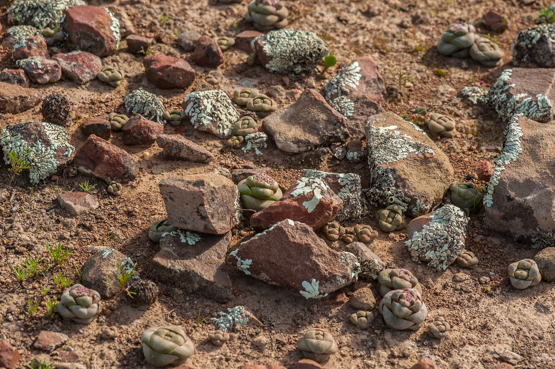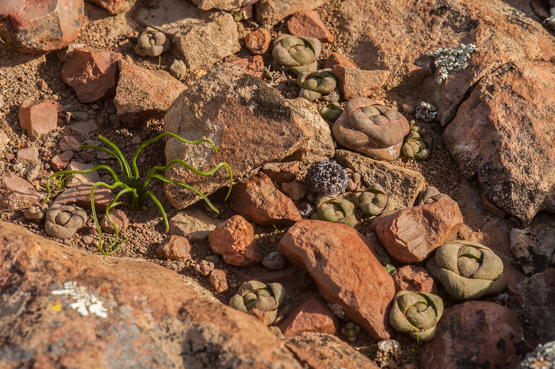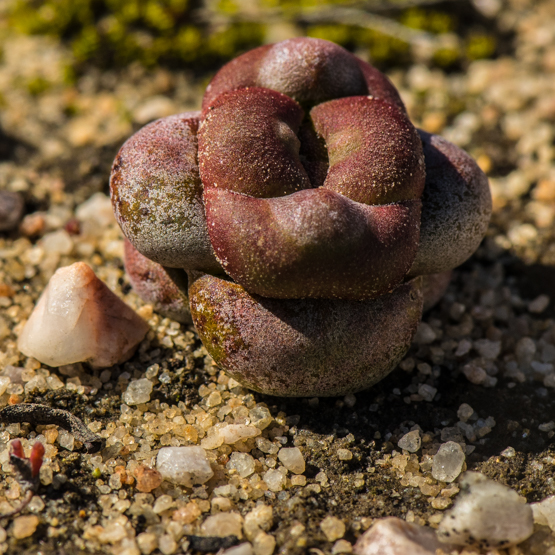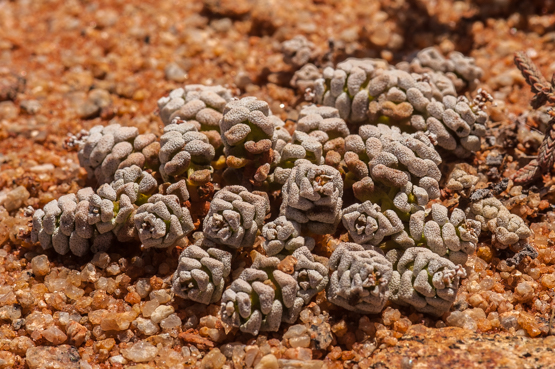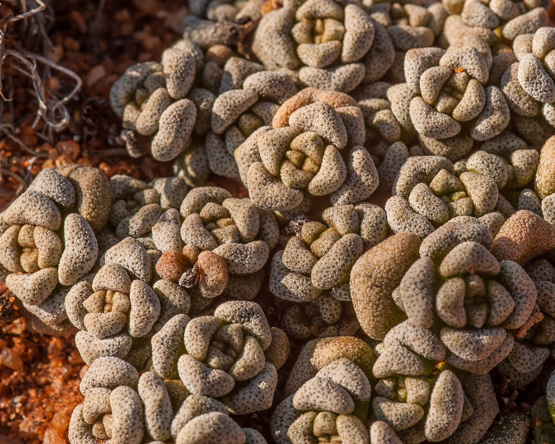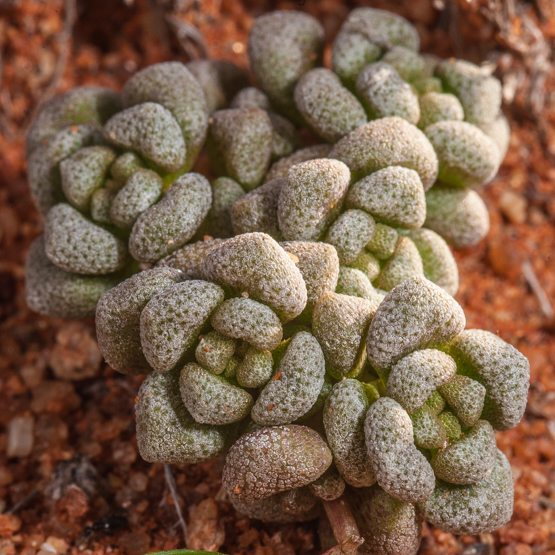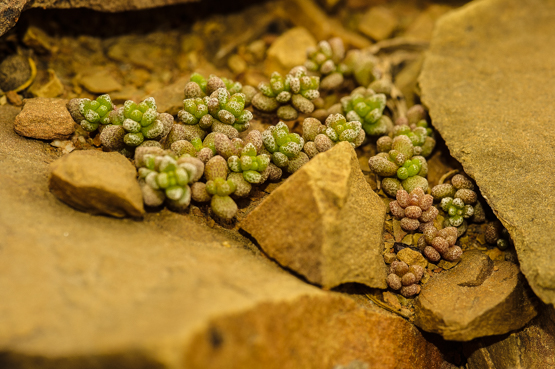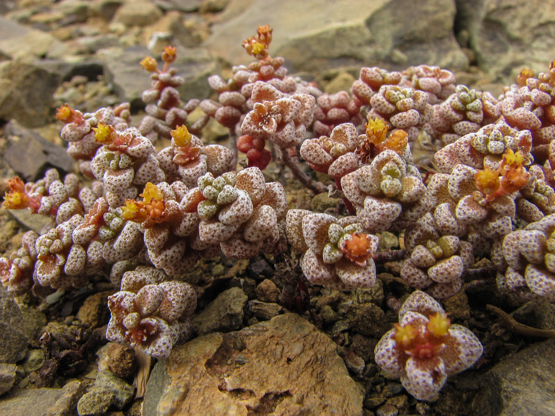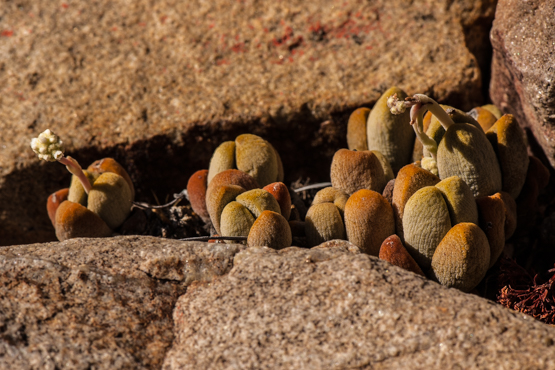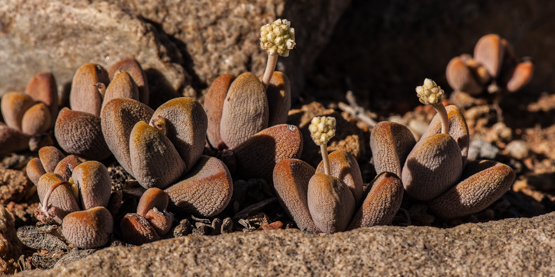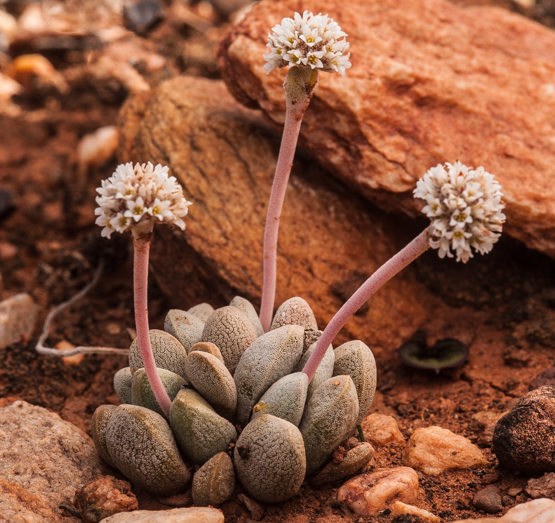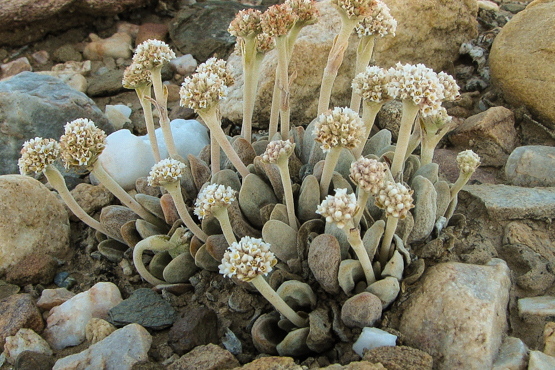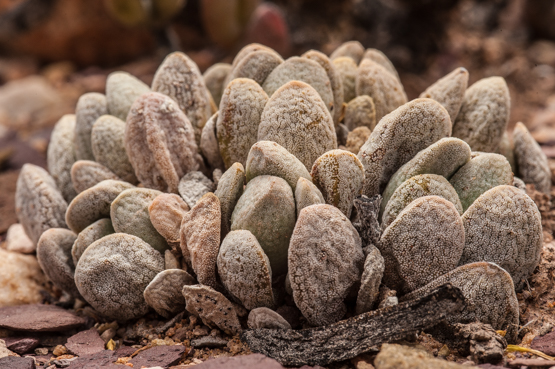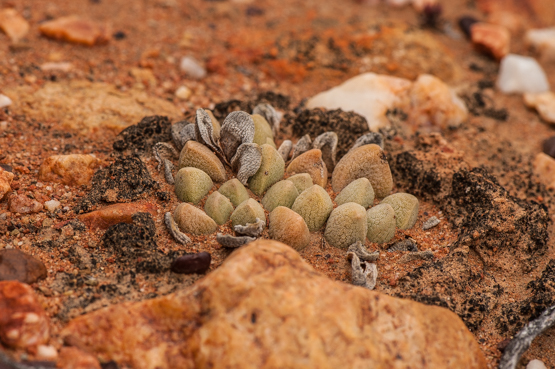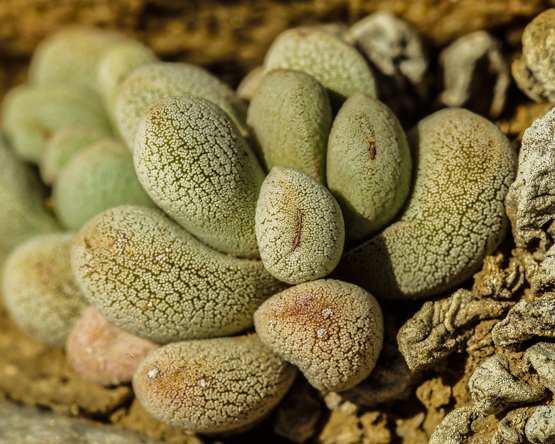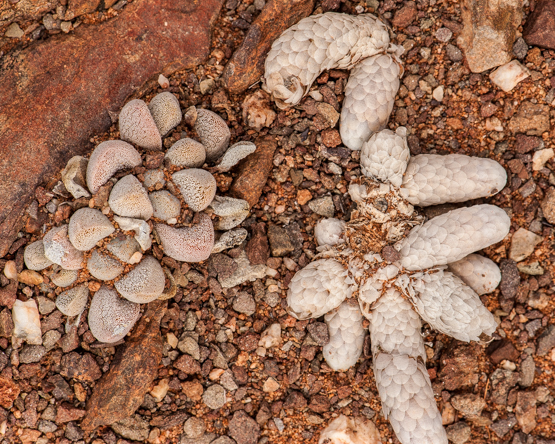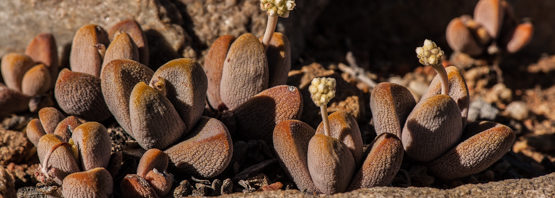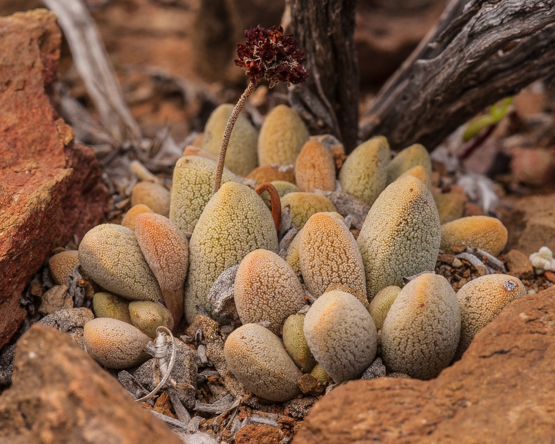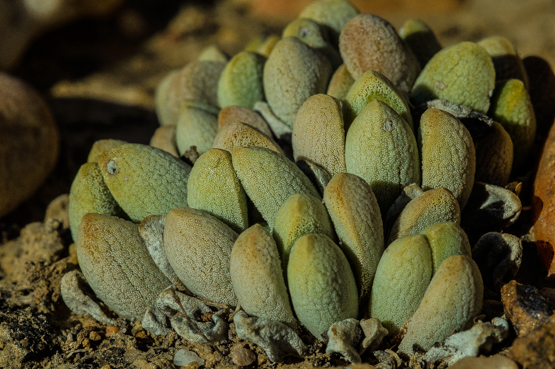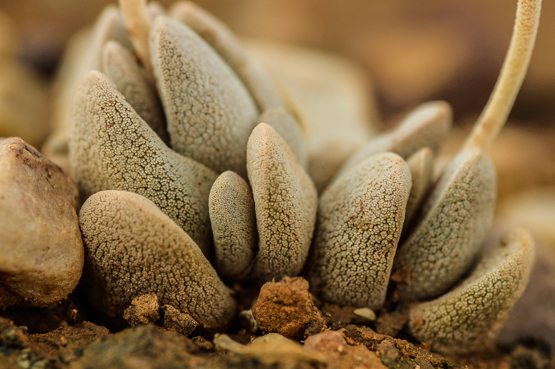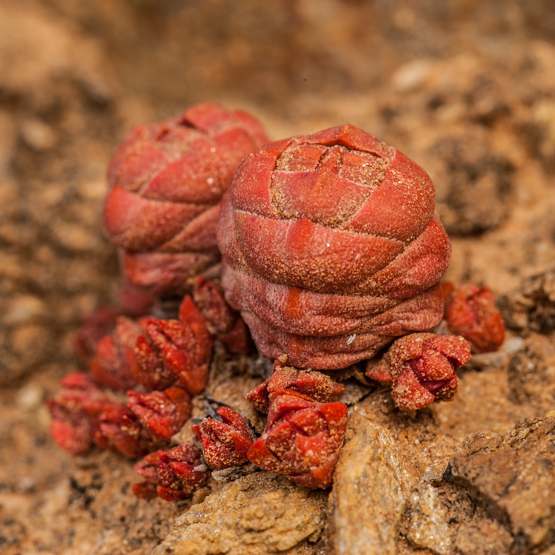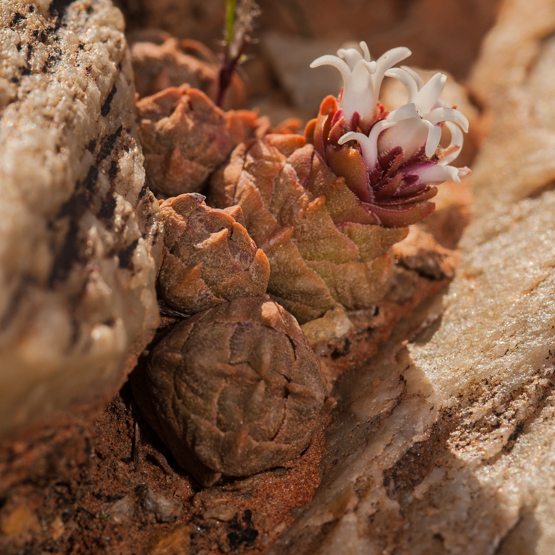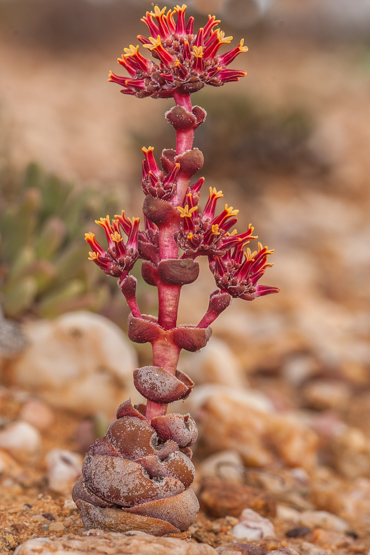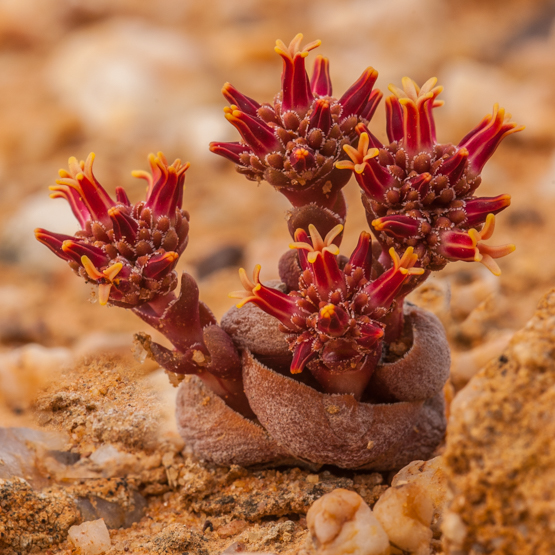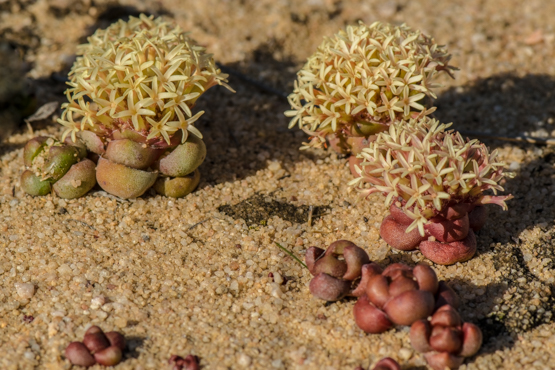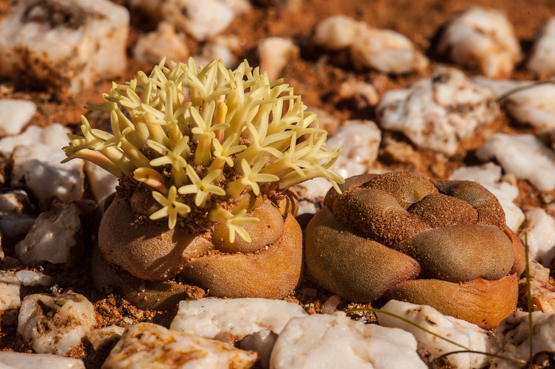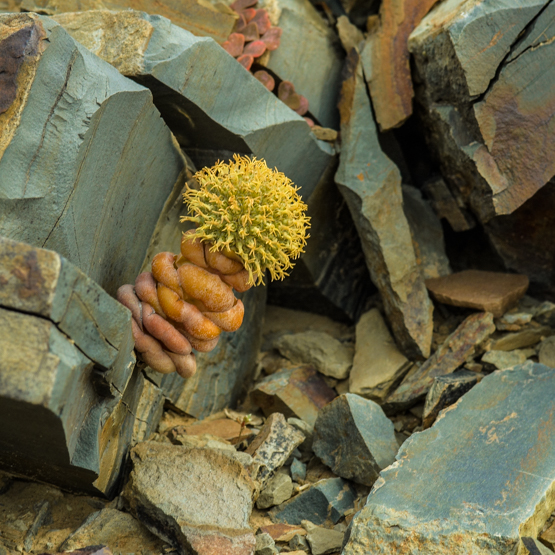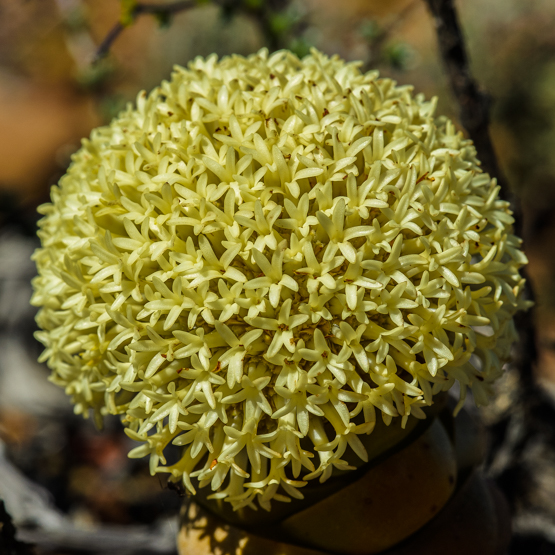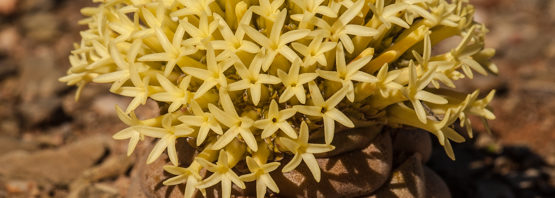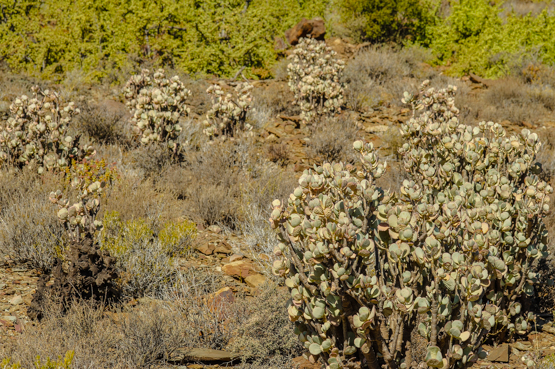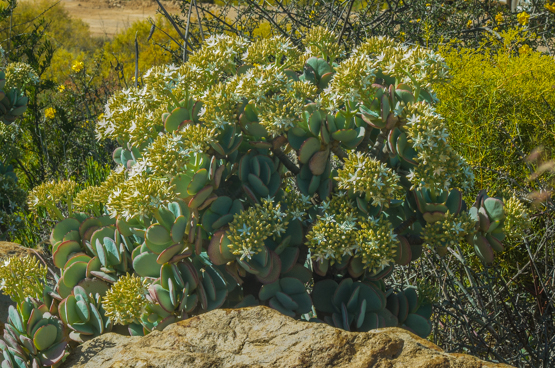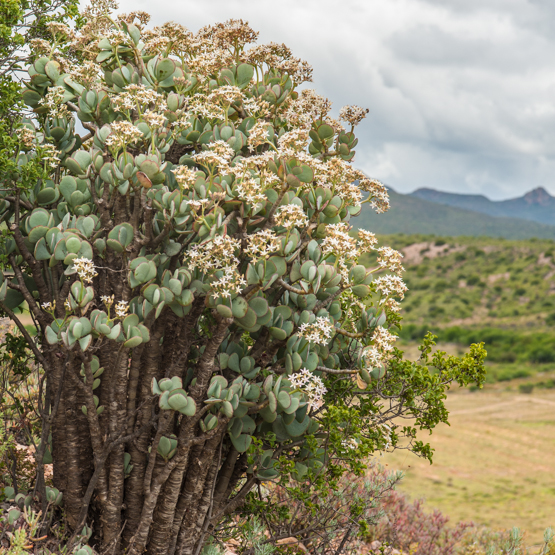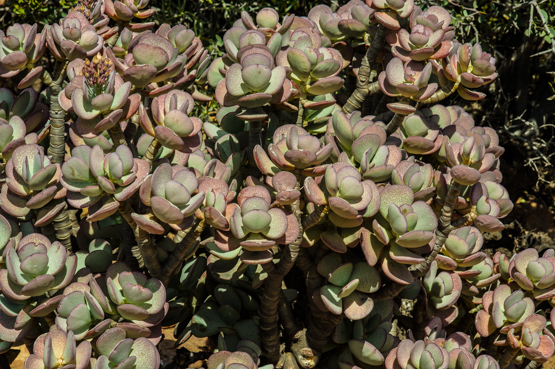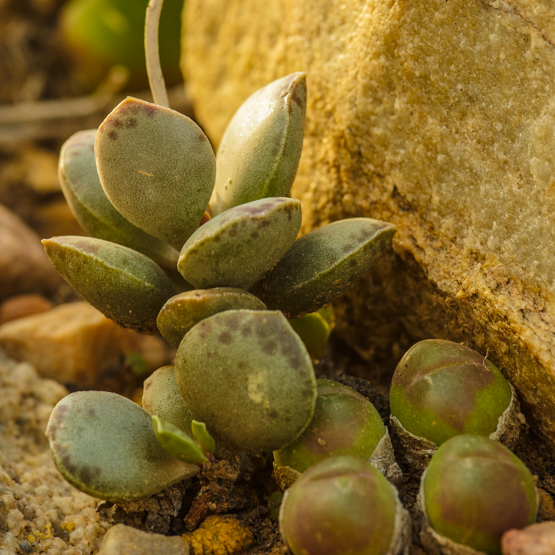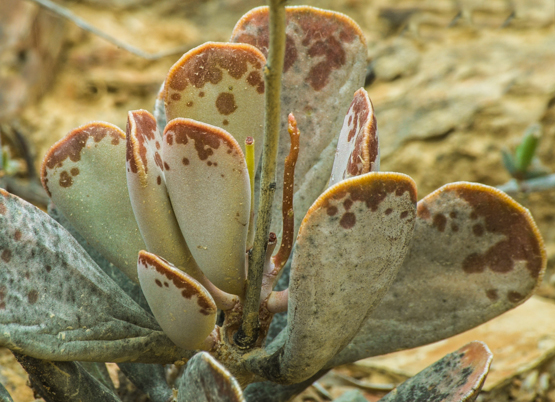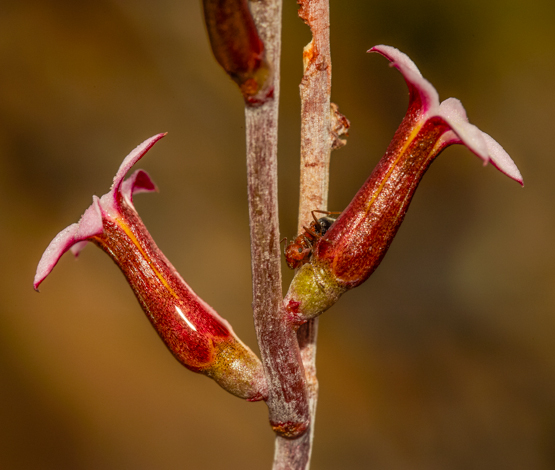It takes plants of this species 5-10 years to reach maturity and become columnar.
There are 2 subspecies, each with a number of local forms.
The plants are often locally abundant on gentle slopes and in depressions (often with quartz gravel); sometimes they also occur in shallow soil on rocky outcrops.
The flowers are white, pale yellow (often tinged red) or rarely almost red.
Subsp. columnaris is usually unbranched, with columns 2-3.5 cm wide, often as long as broad.
The inflorescence is swollen, rounded to flat and appears from May to September
The plants are monocarpic, which is another way of saying they die after flowering.
They are found in most parts of the little Karoo, the adjoining western Great Karoo and towards Calvinia.
Subsp. prolifera reaches a height of 3-10 cm when in flower and forms several short branches at the base. Often these branches easily break off and take root.
The inflorescence is more or less branched and appears from July to October. After flowering, the plants often regenerate from the lower branches.
This subspecies occurs in most parts of Namaqualand and adjoining areas of Bushmanland and southwestern Namibia.
The four pictures all show ssp. columnaris.
